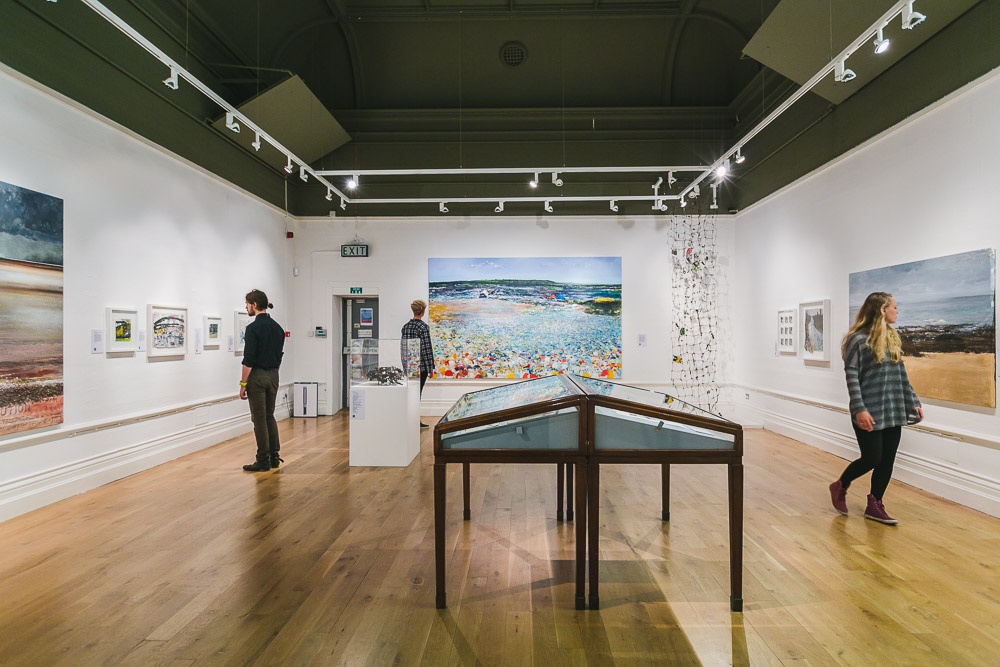Cornwall Council is investing in a range of culture capital projects to support local economies, attract visitors and strengthen the creative sector. This case study forms part of the Value of culture - cultural investment section of our online Culture Hub.
Culture and the creative industries are of significant economic importance to Cornwall – as an employment sector, a driver of innovation and as part of its tourist offer. Cornwall Council’s culture strategy places a strong focus on growing the creative sector to provide fulfilling careers for local people while diversifying the county’s economy and attracting more visitors.
Cornwall’s cultural assets include 70 museums and the UK’s largest World Heritage Site. In recent years, the council has invested in a number of major cultural capital projects which will generate income beyond their individual value. This includes £4.5 million for Tate St Ives, £1.5 million for the King Edward Mine, £3 million for the Hall for Cornwall and £6 million for Kresen Kernow, a new archive centre.
In 2010, the council established the Cornwall Cultural Investment Board to bring the main cultural sector funders together. The board aims to deliver the culture strategy, work with other partners to develop transformational projects, identify investment priorities and attract external funding. Another key partnership is Cornwall 365, a network of all the county’s cultural players and tourism businesses.
Impact of the work
All the capital investment projects are levering in match funding and acting as catalysts for other work, such as:
- increasing year-round town centre viability in St Ives
- creating affordable workspaces at King Edward Mine
- community outreach through the Hall for Cornwall
- town centre regeneration in Redruth (Kresen Kernow is helping to deliver 300 jobs along with housing regeneration).
The council’s investment is also providing a stimulus for local businesses, including the arts, food and drink and media. Every £1 leverage from the cultural capacity programme budget levers in the region of a further £4. Stephen Horscroft, Economic Planning and Strategy Officer, said: “It is the building of this capacity, coupled with an enthusiasm for the identity and history of Cornwall, which has enabled these cultural regeneration projects to flourish.”
To support continued funding of community-based culture and arts organisations, Cornwall and the Isles of Scilly would like to see a regionally based endowment fund being formed with trust-based investment objectives, supported by private sector contributions, legacies and fundraising, which could develop a match-fund and project delivery capacity to substitute for reductions in public funding. This would see trusts raising funds for major projects, run by the local community and supported by practitioners.
Looking to the future
In 2016 Cornwall set out its five-year plan in a white paper for culture, building on previous investment in infrastructure to work towards new goals. Through this work, the council intends to achieve the following outcomes:
- a 10 per cent increase in local participation in cultural activity
- a 15 per cent increase in sector turnover
- 1,200 new jobs in the creative economy (to 13,400 jobs)
- 100 new cultural sector apprenticeship places
- 1,000 more students studying higher education creative courses
- a 10 per cent increase in the cultural tourism market
- a 20 per cent increase in media coverage of cultural and creative activity
- a decrease in the ‘at risk’ heritage assets from 11 per cent
- an increase in the number of museums achieving accreditation
- double the number of Cornish speakers.
Key learning points
- Arts and culture should not be regarded as an ‘add-on’ but an economic driver: creativity is the basis for innovation and delivering a more productive economy.
- Councils must plan ahead for the inevitability of funding reductions.
- Culture and the arts drive pride in place and a sense of identity and belonging: they are good for social cohesion and mental health, reducing the impact on social care and health budgets.
For further information contact Stephen Horscroft, Economic Planning and Strategy Officer, Cornwall Council: [email protected]
This case study has been developed in conjunction with Arts Council England


